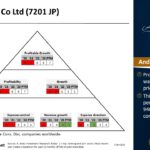from the St Louis Fed
Following the run-up in household debt during the early 2000s, consumers have been steadily reducing their overall debt level (i.e., deleveraging) since the Great Recession ended in June 2009.

The ratio of household debt to personal income peaked in the mid-2000s at nearly 1.2, and it declined to about 0.9 in the second quarter of 2017.
However, looking at aggregate data tells us only part of the story. To better understand the run-up in debt and subsequent deleveraging, Carlos Garriga, Bryan Noeth and I studied patterns in mortgage debt, credit card debt, auto loans and student loans held by different age groups between 1999 and 2013.
Obviously, the biggest change in borrowing over that period has been mortgage debt. In the early 2000s, average mortgage debt increased among all age groups, but especially for younger households. In 1999, homeowners with the largest mortgage debt (about $60,000 in 2013 dollars) were around 45 years old. In 2008, peak mortgage debt (about $117,000) occurred for those around age 42. Despite large deleveraging after the recession (particularly among those younger than 60), average mortgage debt remained higher in 2013 than in 1999.
For the other types of debt, the general patterns we found were:
Having debt is not necessarily bad, as it allows individuals to make up for the mismatch between income and consumption expenditures earlier in life; consumers just need to be prudent with the amount of debt they take on. By studying debt patterns, however, we hope to gain a better understanding of the tipping point between manageable debt and debt levels that expose consumers to excessive risk.












Leave A Comment